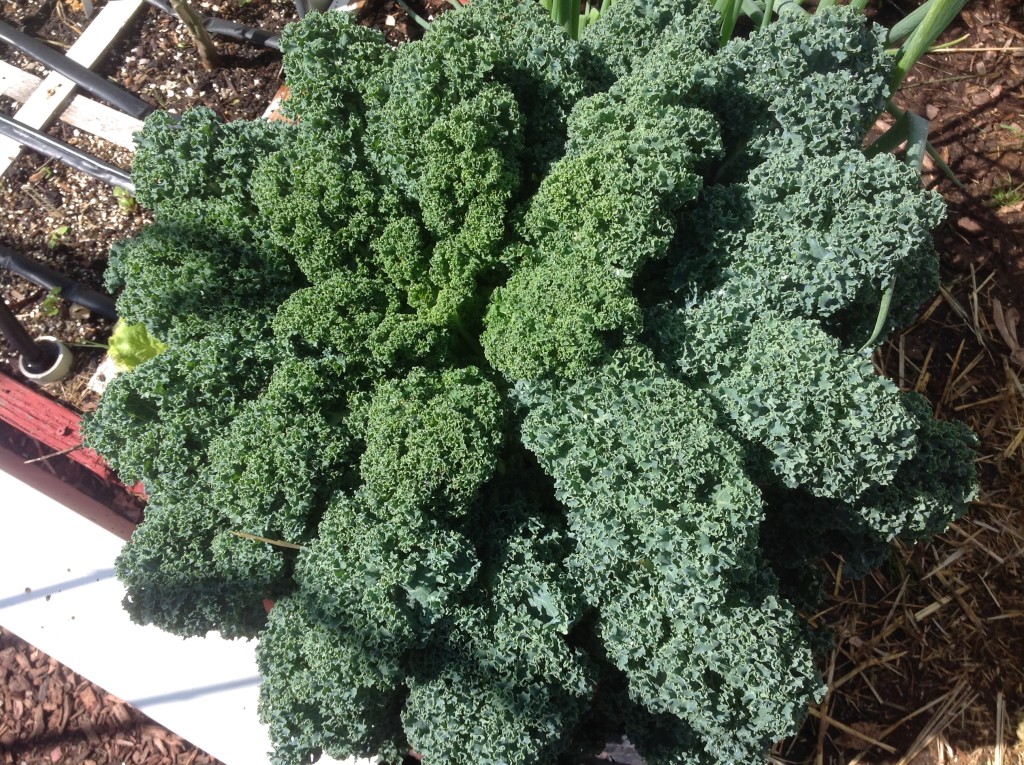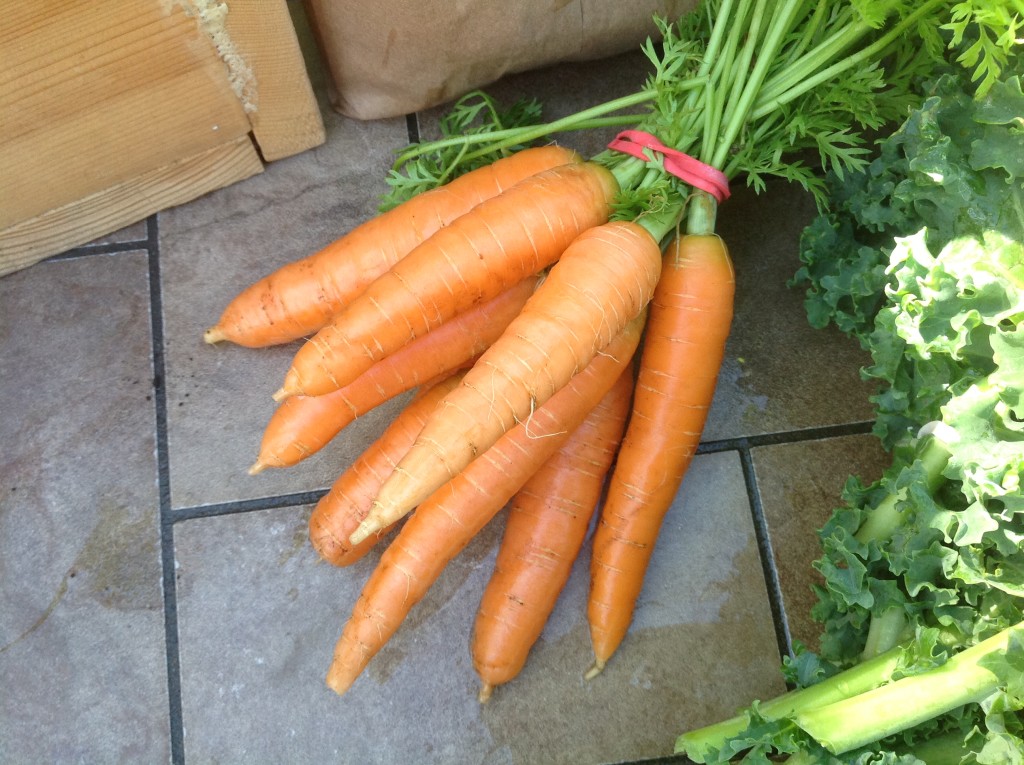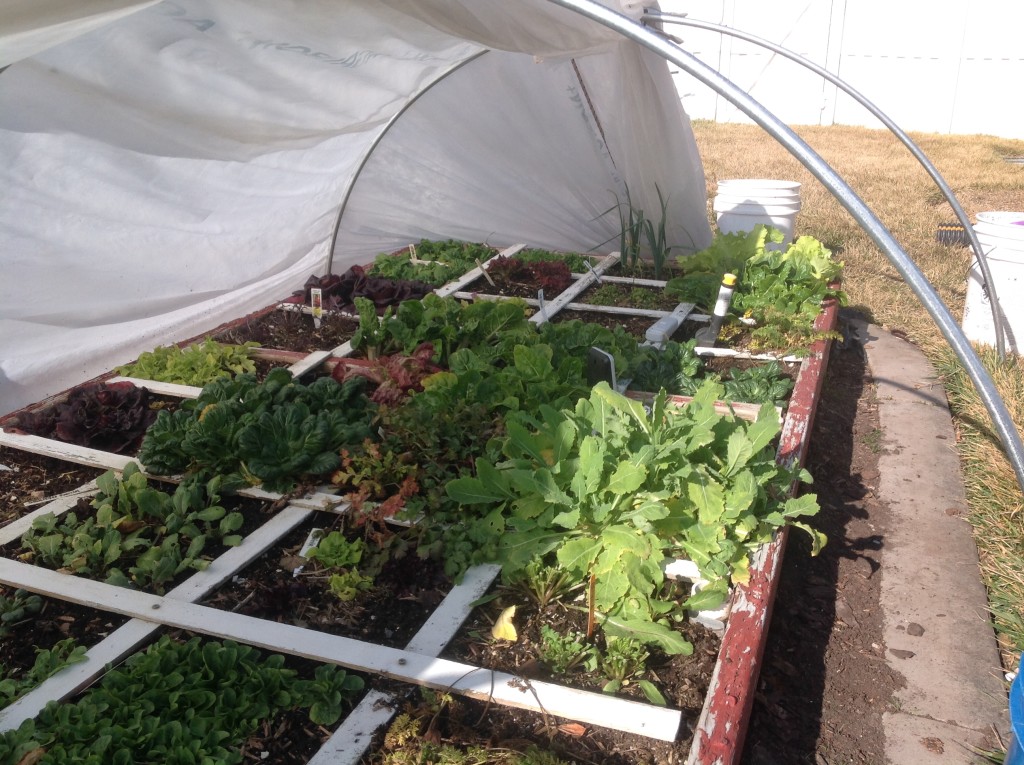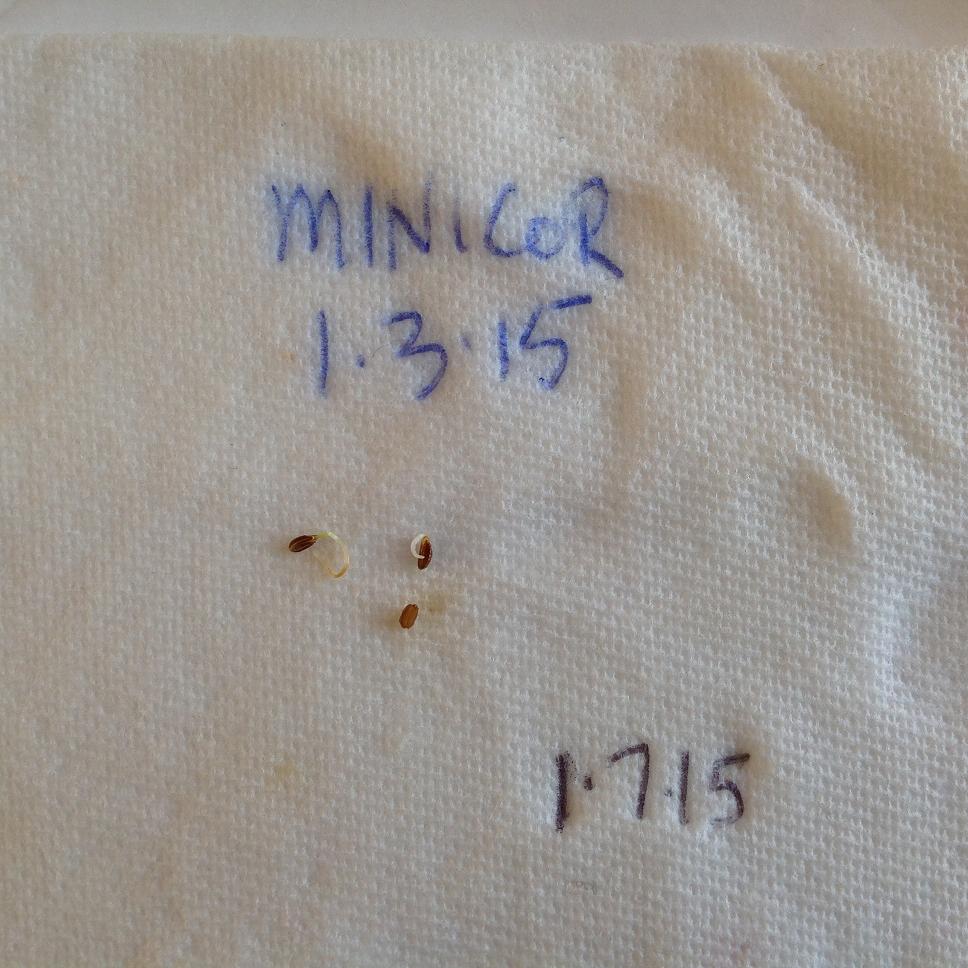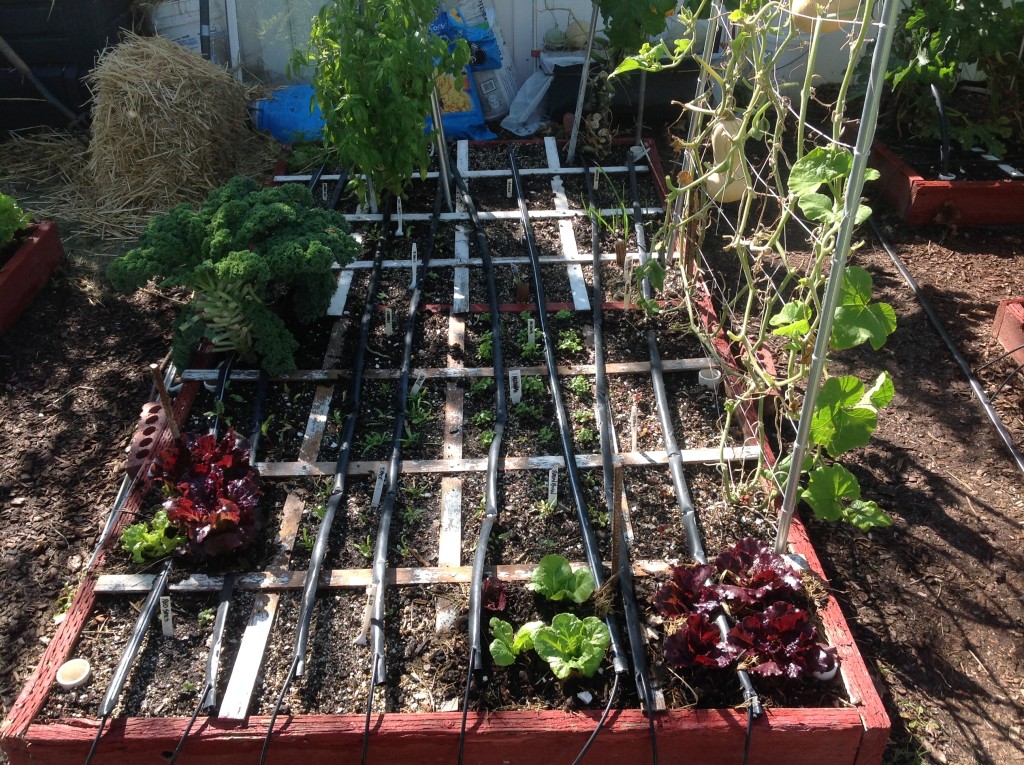 I’ve finished planting this 4X8′ square foot garden about 10 days ago. I can find seeds emerging in every square and in 6 weeks this will look very similar to my spring gardens. This particular box was planted to feed 4 people for a 6 week block of time. You can see that lettuce will be the first crop to be harvested. At about the same time will be spinach, chard, and mizuna. These are all easy to grow, they come up quickly, and they taste great. I think I’ve added some arugula in there. I found a variety that’s advertised as “much milder” than regular arugula so I’m giving it a try. All these make for a perfect mix-and-match mesclun salad. Add to this the cherry tomatoes that are still very productive and cucumbers and you’ve got something really good.
I’ve finished planting this 4X8′ square foot garden about 10 days ago. I can find seeds emerging in every square and in 6 weeks this will look very similar to my spring gardens. This particular box was planted to feed 4 people for a 6 week block of time. You can see that lettuce will be the first crop to be harvested. At about the same time will be spinach, chard, and mizuna. These are all easy to grow, they come up quickly, and they taste great. I think I’ve added some arugula in there. I found a variety that’s advertised as “much milder” than regular arugula so I’m giving it a try. All these make for a perfect mix-and-match mesclun salad. Add to this the cherry tomatoes that are still very productive and cucumbers and you’ve got something really good.
This weekend I continued planting for the winter garden. Over the course of the next 6 weeks I’ll be done with that. It takes a bit of planning but with the right crops, the right planting dates, and a layer of plastic and floating row cover you can easily enjoy fresh produce and veggies all winter long. At least, that’s the goal. We’ve got a few extra people living with us so we might run out a little earlier than we have in the past. Thats okay, it will be deep into the winter months if/when that happens. [ois skin=”1″]
